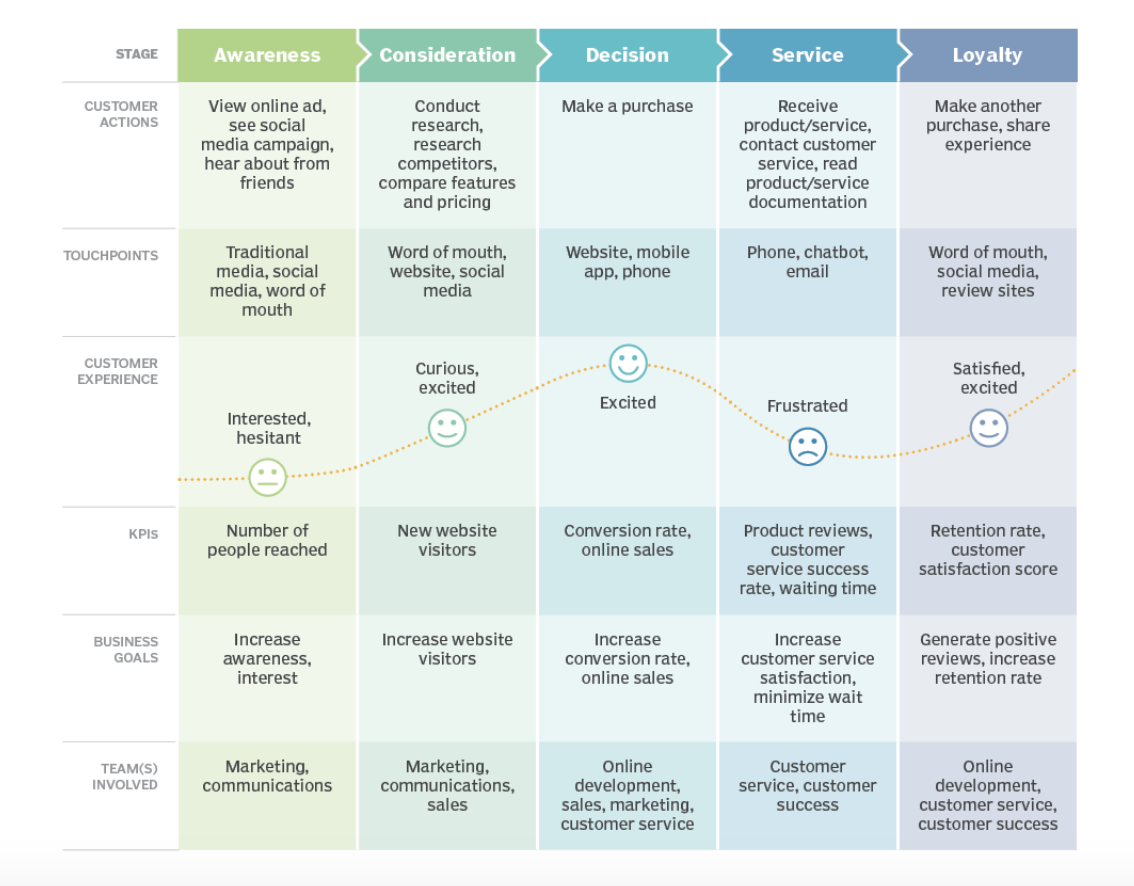Sales & Marketing Alignment Best Practices [That Worked for Us]


In our early days, we innocently let sales and marketing operate in silos. Yes, we felt we were generating leads, only to drown the sales team with unqualified prospects. The team’s morale nosedived, adding more pressure to our bottom line.
Does this sound familiar? Here’s what helped us align sales and marketing and rev up our growth engine.
Sales and Marketing Alignment Best Practices
Unfortunately, sales and marketing alignment is tricky to achieve organically. Sales teams target big deals that add huge incentives, while marketing focuses on attracting as many target users as possible.
These gaps in seeking the right customers widen with time when there’s a constant struggle for attribution. However, it’s not only about sales and marketing. It’s the whole cohort: sales, marketing, implementation, and customer success.
In reality, you must solve for revenue alignment and bring all these teams together. Here’s how.
1. It Starts With The Audience
When different teams compete for their numbers quantitatively, the qualitative aspect of an ideal customer is often missing. These teams may run in different directions and attract users only to see them leave when their free trial ends.
You need to identify your ideal customer. Gather sales, marketing, implementation, and success teams in one room, and ask what ideal customers mean for them.
Chances are, their definitions would repel each other like the same poles of a magnet. To make sure all teams align on who an ideal customer is, you need an ideal customer profile (ICP).
An ideal customer profile in B2B informs your team about the following:
- A broad view of enterprises your sales teams should target.
- Firmographics include business size, industry, location, and organizational structure information.
- Technographics involves software, hardware, and digital platforms your target enterprise uses.
- Psychographics cover your target organization’s mindset. It tells if they prefer innovative or traditional solutions, their values, interests (increasing revenue, reducing costs), and other personality traits (risk takers or safe players).
- Business situation describes the number of years in a business, growth rate, new initiatives, profitability, acquisitions, and many other factors.
- An operating model includes details on how a business prices its product or service, the average number of transactions, and other details that describe its operations.
- Resources provide details about your target company's team size, partners, and other resources.
You can create an ideal customer profile for your business with these details. Refine them with win/loss analysis and sales insights to identify common traits of customers who drive the most value from your products.
Here’s an example of an ideal customer profile:

Remember, an ICP is different from a buyer persona. An ICP gives a broader understanding of your target business in a B2B space, while a buyer persona reflects the traits of a person who would purchase your product or service.
2. Map Customer Journey Together
A customer journey map reveals many different touchpoints where customers can interact with you. Visualize this map to understand how you acquire and optimize ideal customers after closing deals.
Here’s an example of a customer journey map from TechTarget.

For revenue alignment, ensure sales, marketing, and success, and support teams' metrics throughout the sales journey. Give them ownership of their key metrics and quotas corresponding to a metric one level deeper in the funnel.
For example, the marketing team will own the number of marketing-qualified leads (MQLs) generated and how many have been turned into sales-qualified leads (SQLs). Similarly, the sales team will own the number of prospects in the funnel and how many of them turn into opportunities when the implementation or pre-sales team qualifies them.
Did you know? Storylane’s personalized demo serves as a great tool to qualify MQLs and identify prospects that the sales team can engage with, on priority. You can use data like the number of MQLs who watched demos and how they interacted with it. Based on our insights, 95% of our customers had watched a Storylane demo before they converted.
Ownership of a metric that’s one level deeper in the customer journey or your sales funnel helps you refine the ICP as you close more deals successfully. With repeated iterations, you’ll start attracting the right customers who bring substantial average revenue per account (ARPA) with higher lifetime value (LTV).
Tip: Simply giving ownership of a metric that’s one level deeper might not work if your incentive structure doesn’t reflect the same. Make your attribution right to incentivize teams in a way that encourages alignment and collaboration.
3. Speak With One Voice
Your ideal customer profile will help unify how different teams communicate with the target audience across all channels. However, it might not sustain if your teams aren’t structured correctly.
For sales and marketing alignment, or broader revenue alignment, it’s important that your organization’s structure sees sales, marketing, implementation, and customer success functions as one team – the revenue team. Make sure one leader runs the revenue department.
When you have created such a structure, the leader's next step is to identify and promote a North Star metric consistently. This is the most critical metric for your company, determining success. Talk about this North Star metric in every company meeting, while discussing new ideas and initiatives and in every decision-making process.
The North Star metric should become so ingrained in people that it becomes a company value. When all the conversations are about achieving the same goal, it automatically makes the messaging that comes out of it consistent across all departments.
Learn how to create an outbound sales strategy to achieve your North Star metric.
4. Share Goals and Success
Sharing goals means collaborating and supporting each other to achieve goals as one team. You’ll own a key metric and partially own another KPI that sits one level beyond the point after your processes conclude. For example, marketing would focus on the pipeline + new business.
This approach allows the whole team to fight for everyone’s goal, making it easier to achieve the North Star metric you’re striving for. In weekly meetings, discuss these goals and metrics and encourage open discussions between different functions to support each other in moving closer to the goal.
For example, when MQLs are disqualified as SQLs, sales leaders can support marketing by taking customer feedback on why these leads dropped off. Using this information, the marketing team can align their strategies, tactics, and messaging to drive the right people in.
Remember: Incentivize the team according to the metrics they own entirely and partially. Suppose you keep on incentivizing for the primary ownership. In that case, the alignment might fade away soon as some people might lack the motivation to own secondary metrics that are further ahead in a customer’s journey.
5. Break Down the Silos
When you bring marketing, sales, success, and support teams under the leadership of one CRO, it helps you break silos and encourage teams to discuss their challenges openly.
In such a structure, you won’t need to collaborate cross-functionally since all these teams will be one group striving toward achieving the North Star metric.
Another way to break down existing silos is to give complete visibility of a buyer's journey to all teams who’re or will face customers. A customer relationship management software will help you give such comprehensive visibility to your team.
6. Set the right goals
Partially owning the metrics might not help if there are no structured processes to work on them. Discussions in meetings will give an overview at a broader level, but you need something on the ground level so that people executing tasks and activities have a sense of being one team.
Create processes for teams to collaborate effectively on these metrics. For example, the marketing team can work on driving better SQLs if they shadow sales in their demos. This gives them an understanding of a prospect's actual pains and motivations to try and purchase a product.
Similarly, the sales team can collaborate in creating and reviewing marketing content crafted to encourage prospects to purchase. Think in these directions, and create structured processes for your teams to follow and collaborate to achieve your North Star metric.
The Outcome of a Strong Marketing-Sales Alignment
When your sales, marketing, and other teams work in unison toward achieving one goal, here are the results you’ll observe:
- Attract the real A players on your team. When you remove unnecessary friction and blame games between teams, you make your team more productive. This will help you attract top talent to your team who want to work on achieving those numbers for you in the absence of unnecessary hurdles.
- Better team morale. Since everyone works as one team and toward one goal, it energizes the whole team to do their best to move closer to that goal. It keeps their motivation up as people become more supportive of each other’s work.
- See and fix mistakes before they snowball. When the whole team works collaboratively toward achieving one North Star metric, it becomes easier to identify and mitigate risks before they cause actual damage. Everyone offers support from their area of expertise and helps people see the complete picture.
- Attract more qualified leads. The team has a good understanding of what an ideal customer looks like. The understanding gets reinforced as sales, marketing, and others partially own one metric from the next stage in the sales process. All teams work together to identify the right customers, making it easier for the group to attract better leads.
Achieve Sales and Marketing Alignment with Storylane
Storylane caters to both sales and marketing use cases. It takes less than 10 minutes to capture your product and build interactive demos that you can embed on your website or ad landing pages, use as leave-behinds, or use for live demos.
Collaborate on core demo templates with your marketing team. Sales reps can then quickly personalize these templates for individual prospects, ensuring brand consistency while tailoring the message for specific needs.
These demos give you key insights to qualify prospects for the next stage in the sales cycle.
Try Storylane and let your marketing and sales teams work together to attract the right customers.
Frequently Asked Questions
1. How do sales and marketing work together?
Marketing and sales work together by communicating regularly and supporting each other to achieve the quotas they’re striving for. Marketing can take feedback from sales to understand whether the leads they generate are good quality and if the promotional materials are helpful. Conversely, sales can rely on marketing to provide the tools and content to attract customers.
2. What is the key benefit of sales and marketing alignment?
The key benefit of sales and marketing alignment is efficient revenue growth. Both departments work together to attract the right customers and close them without wasting each other's effort on prospects that don’t match the ICP.
3. How do you measure sales and marketing alignment?
You can measure sales and marketing alignment by tracking Marketing Qualified Leads (MQLs) to Sales Accepted Leads (SALs), Sales Accepted Leads (SALs) to opportunity conversion rate, sales cycle length, and customer satisfaction.
What’s a Rich Text element?
The rich text element allows you to create and format headings, paragraphs, blockquotes, images, and video all in one place instead of having to add and format them individually. Just double-click and easily create content.




.svg)





